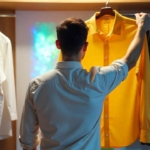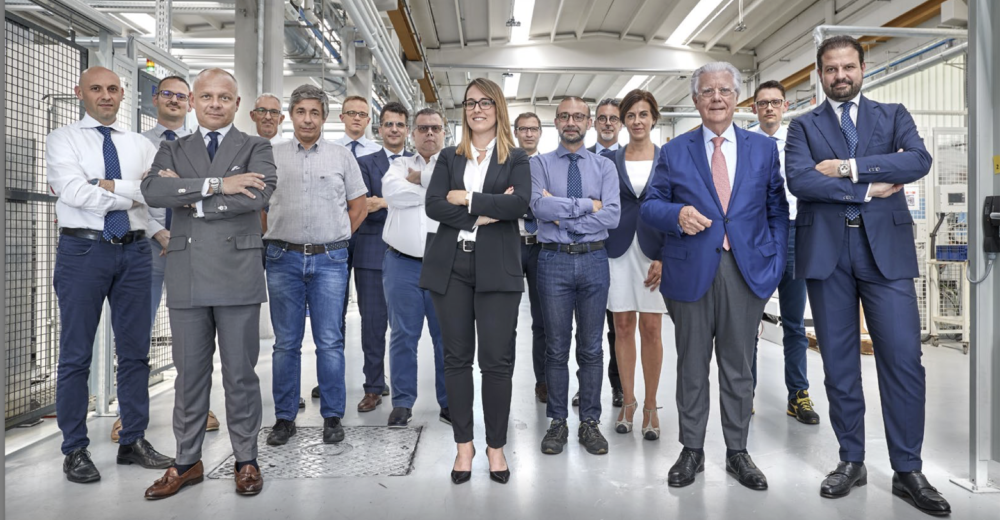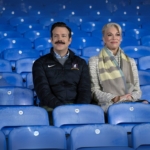The recipe for a successful product: the Crea Tu (create your own) case
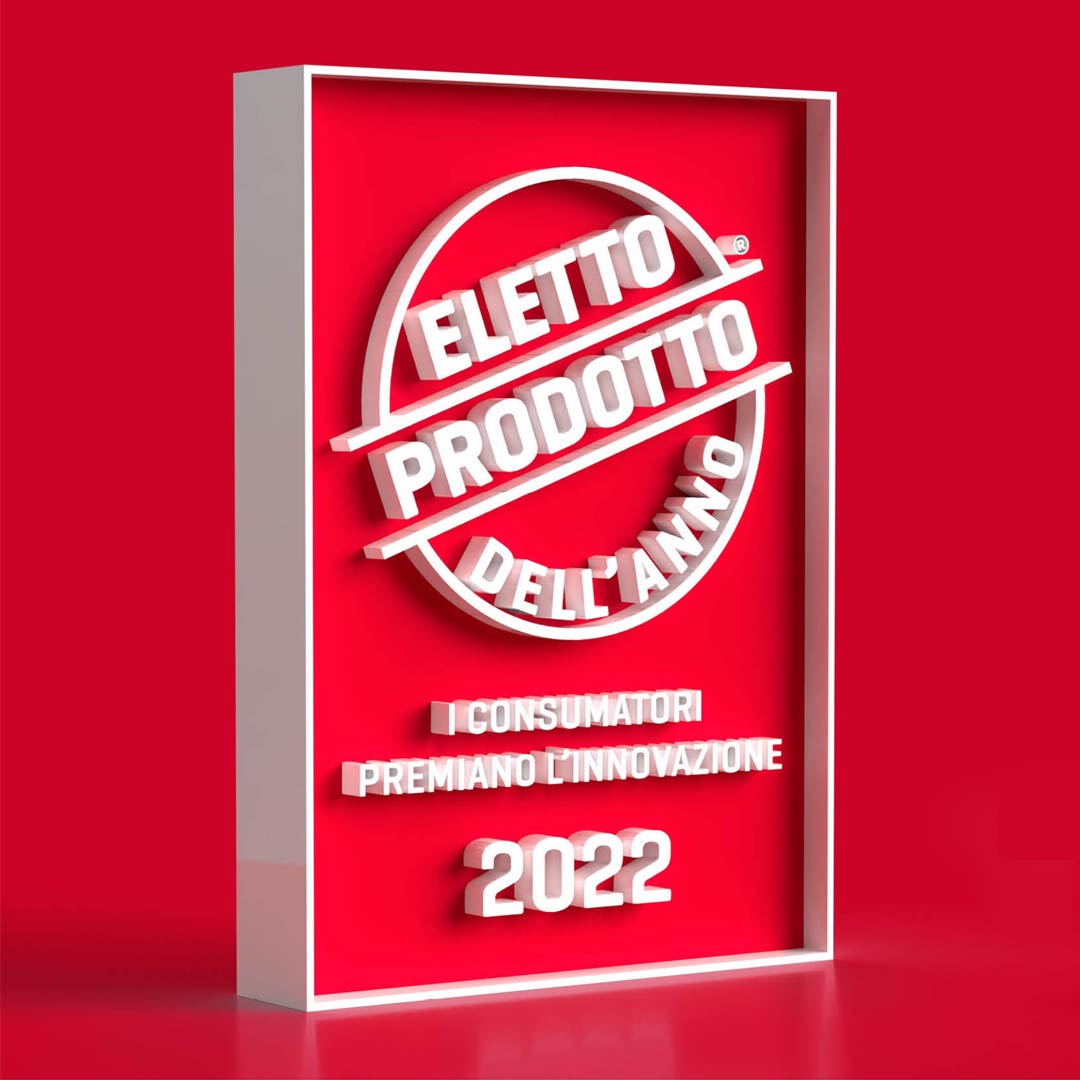
Indice
“Innovation, like cooking, is a slow thought process with a fast execution” (Massimo Bottura)
7 innovation ideas, 14 solutions analyzed, and 2 concepts developed. 1 Product of the Year 2022.
These are the key figures of the Impact Innovation project, in partnership with Lenovys, which led Orogel to successfully launch the “Crea tu” (Create Your own) product range, winning the Product of the Year 2022 and Best Food Product 2022 awards.

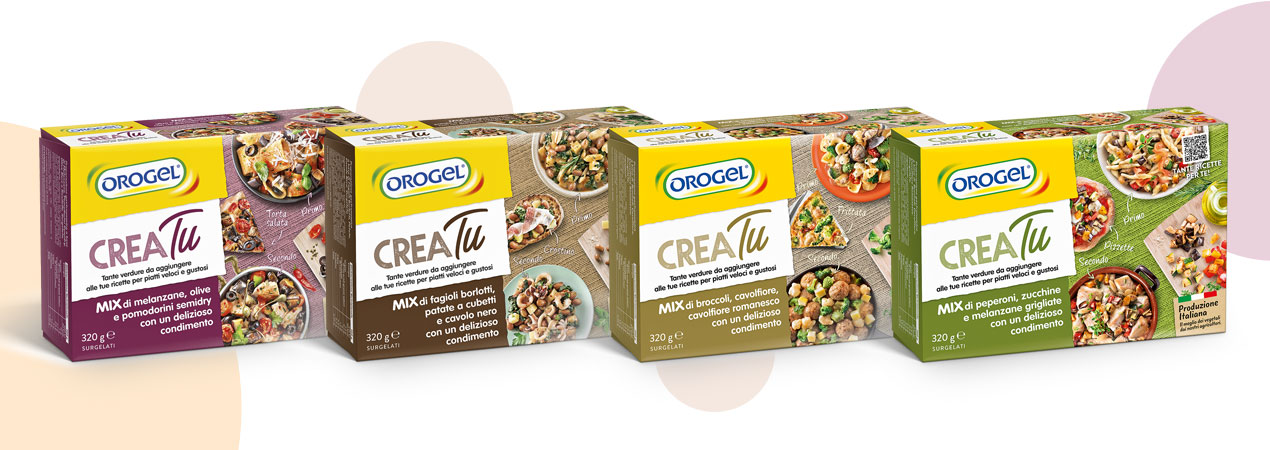
The Crea Tu range currently includes four frozen vegetable mixes, pre-seasoned with aromatic herbs, spices, and a drizzle of oil. These mixes enable consumers to create new and original dishes easily, quickly, and creatively.
The journey that led to the creation of Crea Tu was not the first experience in innovation for Orogel, a leading Italian producer of fresh frozen vegetables.
Over the years, the company has continuously innovated, as evidenced by the patented Cubello Foglia Più. This unique production process ensures that only the most tender spinach leaves are brought to the table, gently layered and frozen intact, without stressing the raw material.
However, with Crea Tu, Orogel aimed to take a further step towards becoming a Lean Lifestyle Company. This is a company where you can be both visionary and pragmatic, and where you can be effective while also giving significant autonomy to teams and individuals. The input from the Company Management was, in fact, very clear:
- Create products and/or services that increasingly and better meet market demands, anticipating expectations (Vision) over an 18-month period (Pragmatism)
- Launching this type of innovation on the market (Effectiveness) by leveraging autonomous and multidisciplinary teams, rather than relying on the insights of the Company Management.
This approach has led to two innovations that the company has introduced to the market over the past 18 months: the first online sales solution for its products (shop.orogel.it) and the Crea Tu Product Range.
Here, we revisit some of the key ingredients that have contributed to the success of the Crea Tu range.
If you want to learn more about the Crea Tu generation process, don’t miss the joint Orogel-Lenovys event where all the details of this successful launch will be discussed.
Observe to learn
Never start with the product; instead, focus on the problems customers face in their daily lives and develop solutions that address these issues more efficiently and effectively than the competition.
The Crea Tu product was born from a careful observation of the trends and activities of consumers who complained about the age-old problem: “What am I preparing for dinner tonight?”. Through various research and observation activities “in the field”, we learned that the problem really existed on the market and was felt by a segment of consumers, with clearly recognizable characteristics, who could benefit from a solution that would lead them to prepare a healthy meal, and potentially variable over time, in a short time.
Instrumental to understand the real needs and problems of the target customer was the “Customer Portrait”, which contains the different elements – purchasing and use environment, beliefs and conceptual associations – that influence the desired experience and the so-called Job to be Done, the objective that the customer aims to achieve using the products he has available, and which ultimately influences the purchasing and use behavior of products.
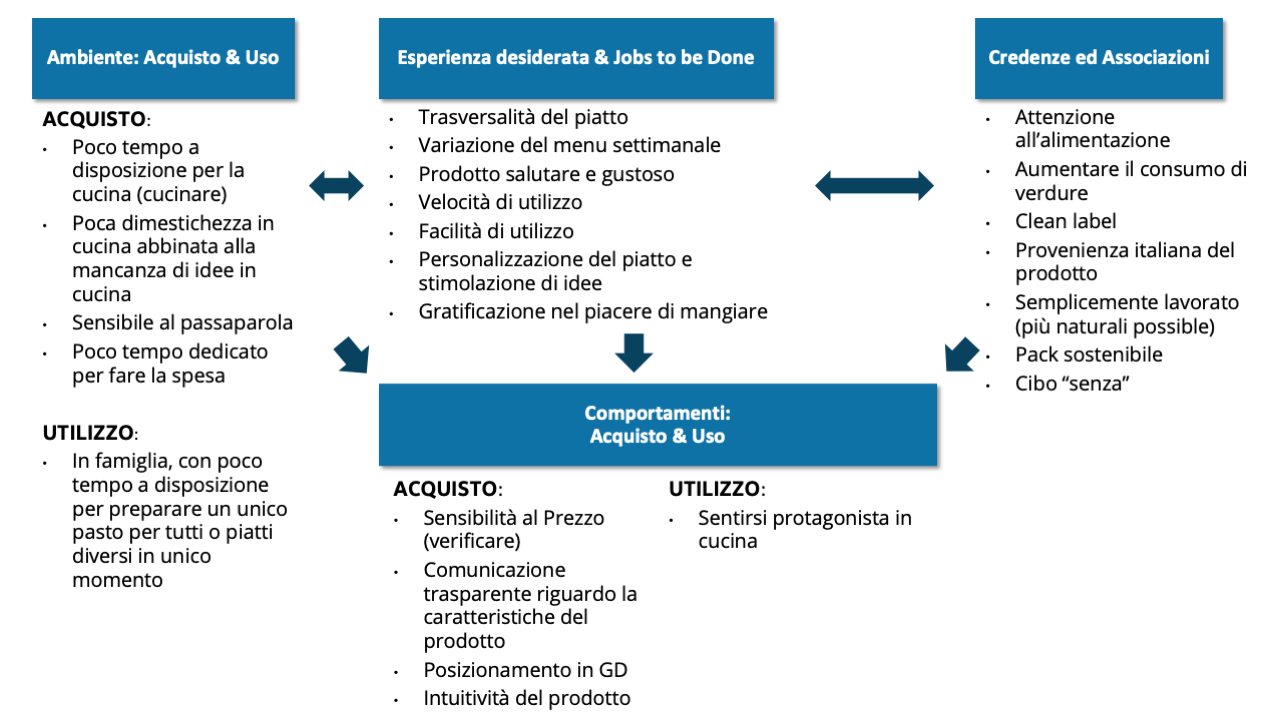
Starting from here, the project team first focused not on the product as such and its technicalities (for example: weight, cutting of ingredients, etc.), but on which recipes consumers could create using the product. Focusing on the goal that the consumer pursues and not on the tool that the consumer uses to achieve this goal stimulated the creative part of the team, thinking about the most disparate recipes and then bringing them back to the preferences of the target market segment.
In this way, the design and development of the product is temporally translated into successive phases, allowing an initial “strategic” focus of the innovative idea and, through the activities of observation and verification of consumer problems, we get closer to the real needs that the company is committed to satisfying.
“We must be different!”
Any innovative solution launched on the market, if it is not developed and implemented differently from the competition, if it does not diverge from other solutions already on the market in allowing customers to achieve their objectives, runs the risk of seeing its cycle dramatically reduced life, and exposes itself to the risk of almost immediate imitations.
The analysis of the context within which the innovative solution will come to life and therefore the analysis of the current solutions presents, and the extrapolation of the related critical success factors have been the subject of very deep attention by the project team. The various shelves of large-scale retail trade were also observed without limiting themselves only to the frozen food sector but also considering other solutions to the same need coming from alternative markets (for example, the market for ambient products).
In this way, Orogel analyzed and considered the entire existing product pool, and this enabled a solution, and its related success factors, to be developed in a manner that was consistently divergent from the competition.
Once we realized that it was possible to differentiate in a marked and decisive way by pursuing the differentiating attribute of “Transversality of the dish”, that is, the ability on the part of the final consumer to create, with a single product, a complete menu from the starter to the second, we understood how the product could be different – from the tasty nature of the mix to the search for possible recipes of the final dishes.
The product development process, therefore, was guided along these market positioning lines not stopping solely at the technical requirements of the product, but by developing a system around the product – more than 80 recipes are available that can be reached through the QR Code printed on the packaging of the product – which enhances and enriches the solution at 360 degrees.
Diverge and converge
“We can use a pencil on a sheet of paper, or a hammer directly at the production site…Which of the two options makes the most sense to us?”
After validating the problem and the potential solution that we could offer to the customer, we addressed the “practical” development phases of the product, unmarking all the technical components of the product – from product packaging to branding, from the type of vegetables that make up the product up to the weight, from the type of vegetable cutting to the type of seasoning to be developed. Starting from the identified recipes, the work team did not focus on the development of a single mix of vegetables or on a series of mixes of vegetables, on the contrary it developed all the possible mixes that those recipes could create: we therefore explored all the possible “joints” of vegetables, carried out an initial evaluation (in practice tasting the dishes prepared with those mixes), eliminated those deemed unsuitable, and then launched another session to explore possible variations of valid mixes, and then validated them again.
Starting from 19 potential mixes of vegetables, after an initial filter 6 were validated, with which 6 additional recipes were elaborated, and then perform another evaluation activity and reduce the potential mixes to 5 and develop 3 more recipes for each. Downstream of a further evaluation activity, the 4 mixes that currently form the Crea Tu range were selected.
Following this modus operandi, attributable to the lean techniques of Kentou and Set Based Concurrent Engineering, we managed to search and find any problems in implementing the solution that would be experienced in the industrialization phase, developing and evaluating, on paper, all possible alternatives product techniques. The result? Go slowly first to go faster then.
Habits at the service of innovation
Einstein said that problems cannot be solved with the same way of thinking used when we created them.
Reasoning by similarity, to unleash the innovative potential of each person involved in any innovation project it is instrumental, and very effective, to understand and know how to stimulate and implement new behaviors, more functional to the purpose to be achieved.
It is no easy task: if we are what we do, repeatedly for every day of our lives, even in the working sphere it is possible that actions repeated over time, without the necessary control and guided only by habit, could stifle innovation. It is therefore very important to immediately align with the project team regarding the non-functional behaviors that we want to avoid during the project and install immediate feedback mechanisms to correct the course and “keep the bar straight”.
Functional was the “Project Agreement” signed with the team:
- We reject any presumption of failure: “it will never work” and “our leaders will never accept” these are phrases banned by our group;
- We can do everything – except go against the criminal laws of the Italian State and physics: we reject the “cannot be done”;
- Ideas must be able to have time to be developed: having already developed a similar idea is not the same as saying that you have already addressed this specific idea under consideration.
By making it clear from the beginning how we wanted to behave throughout the project, we were able to unite and install a relationship of trust and collaboration between all the members of the project team, to whom we owe heartfelt thanks and gratitude: Filippo Andreucci, Lucio Fenati, Gaetano Raguni, Davide Vassallo, Riccardo Siciliani, Barbara Balsamo, Alessandro Domeniconi and Giulia Rossi.
The results
Launched on the market in October 2021, Gamma Crea Tu proved to be a success story:
- it reached and exceeded the sales projections initially drawn up (without any additional production/technological investment)
- it broke the 2 million turnover wall after 5 months of existence
- it earned the election as Elected Product of the Year 2022 and Best Food Product 2022 beating a product that is highly known and valued by the market.
Articolo a cura di:
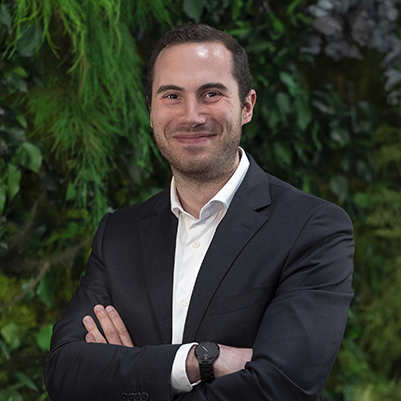
Riccardo Siciliani
former Manager Lenovys
He is a Manager in the Delivery Unit Strategy & Innovation at Lenovys, and manages projects related to the definition and implementation of corporate strategies, the innovation systems and application of Lean Product and Process Development principles with clients operating in the manufacturing, food & beverage and financial services sectors.
Read more
Prossimi eventi

